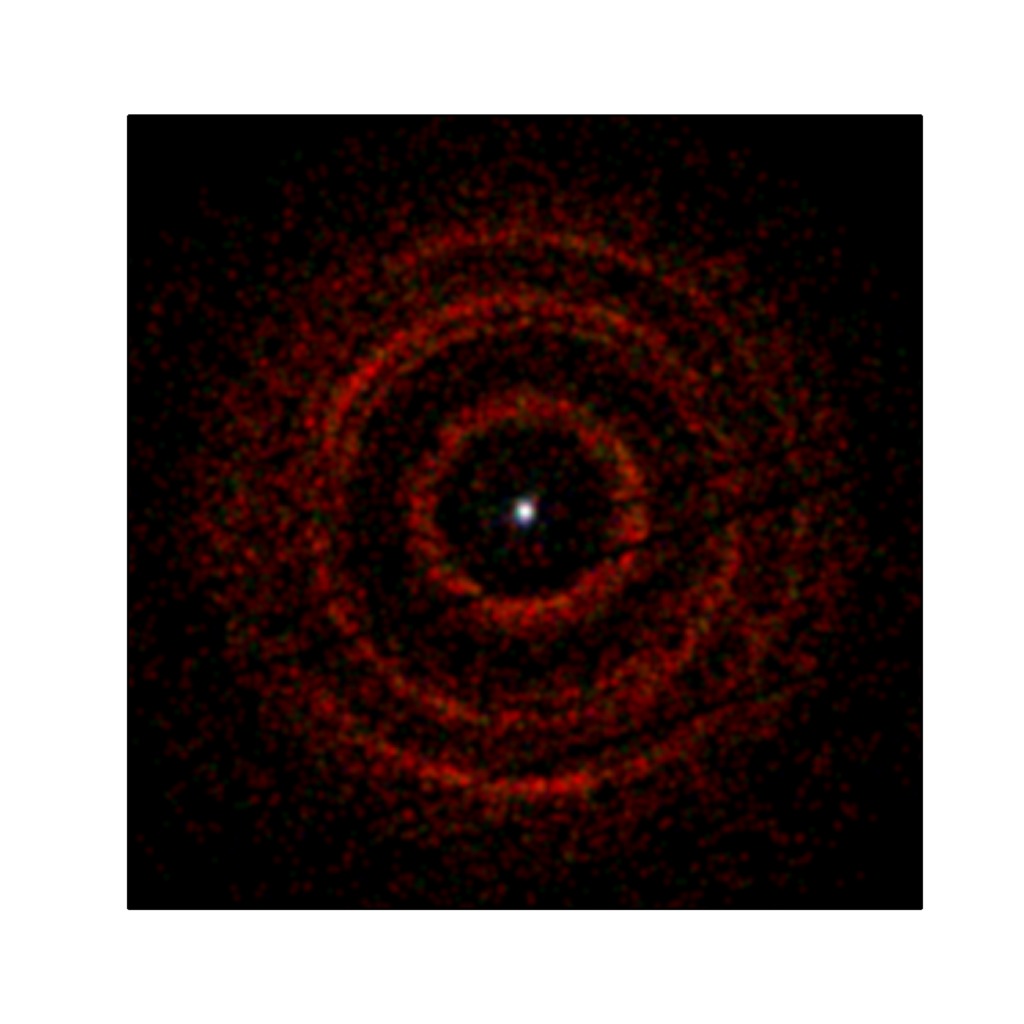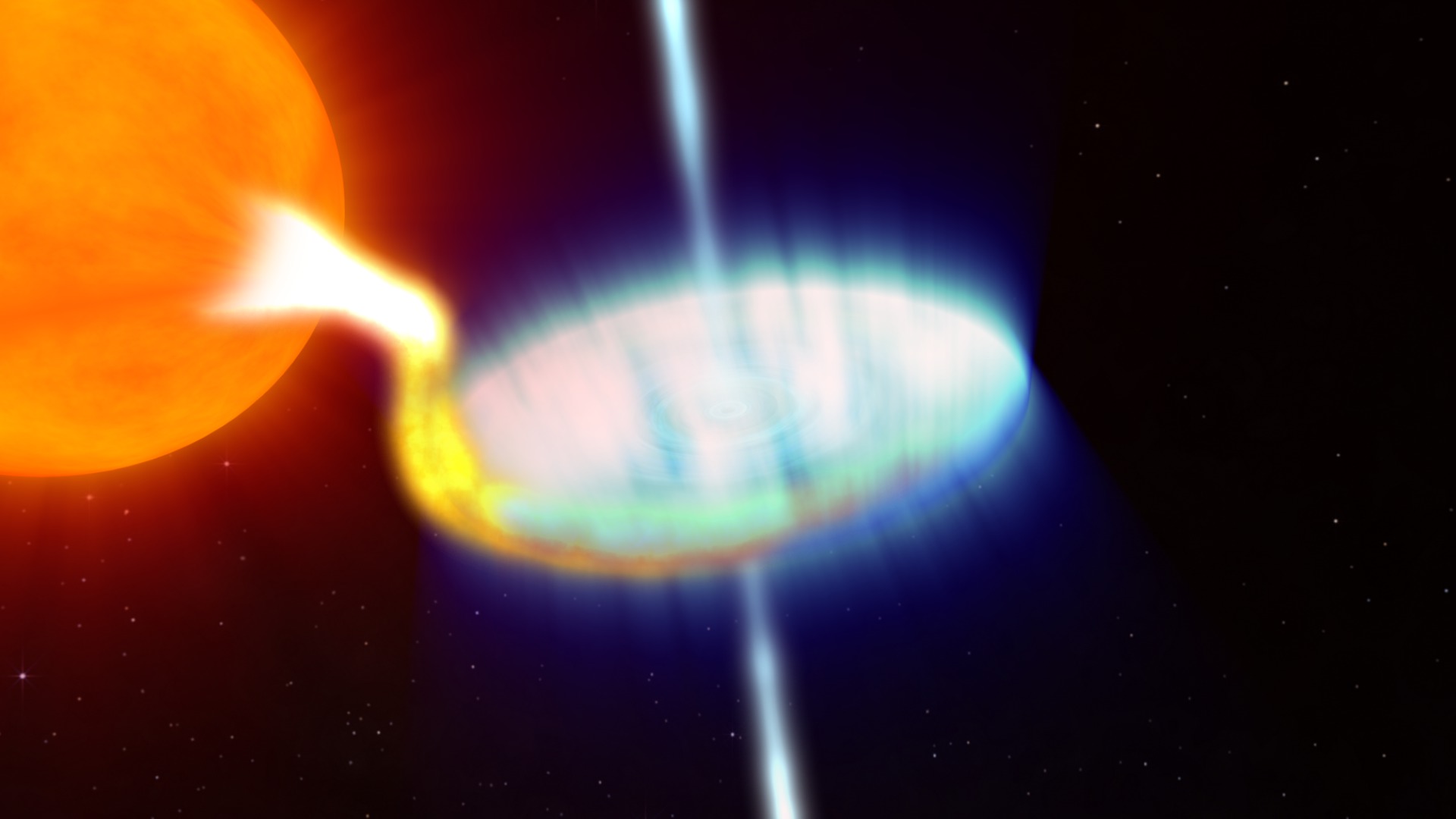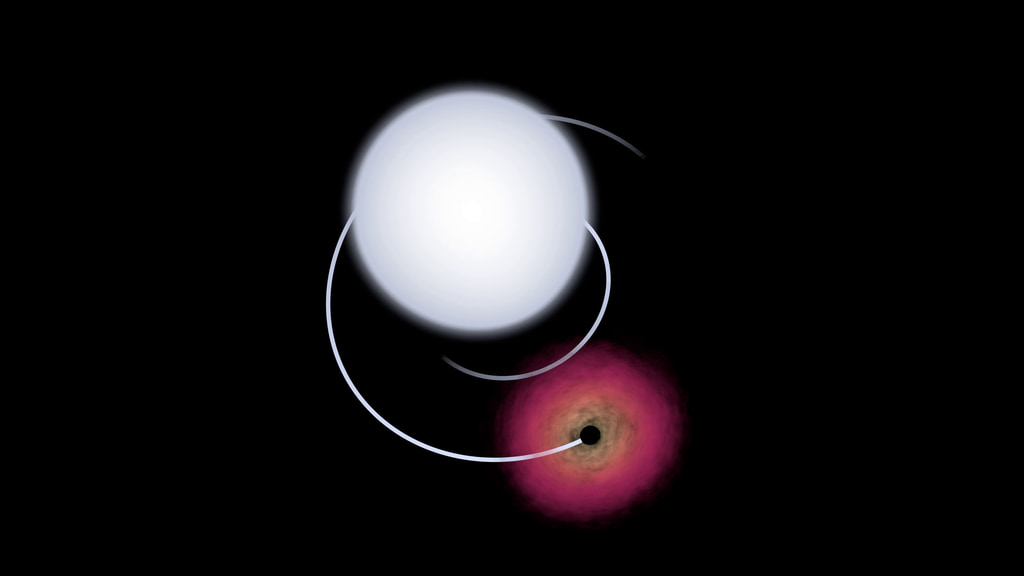NASA's Black Hole Orrery
Learn more about the best-known black hole systems in our galaxy and its neighbor, the Large Magellanic Cloud. This visualization presents 22 X-ray binary systems that host confirmed black holes at the same scale, with their orbits sped up by about 22,000 times. The view of each system reflects how we see it from Earth. Star colors ranging from blue-white to reddish represent temperatures from 5 times hotter to 45% cooler than our Sun. In most of these systems, a stream of matter from the star forms an accretion disk around the black hole. In others, like the famous system called Cygnus X-1, the star produces a hefty outflow that is partly swept up by the black hole’s gravity to form the disk. The accretion disks use a different color scheme because they sport even higher temperatures than the stars. The largest disk shown, belonging to a binary called GRS 1915, spans a distance greater than that separating Mercury from our Sun. The black holes themselves are shown larger than in reality using spheres scaled to reflect their masses.
Credit: NASA's Goddard Space Flight Center and Scientific Visualization Studio
Music: "Event Horizon" from Gravity. Written and produced by Lars Leonhard
Watch this video on the NASA Goddard YouTube channel.
Complete transcript available.
This visualization shows 22 X-ray binaries in our Milky Way galaxy and its nearest neighbor, the Large Magellanic Cloud, that host confirmed stellar-mass black holes. The systems are shown at the same physical scale, and their orbital motion is sped up by nearly 22,000 times. The view of each binary replicates how we see it from Earth. The star colors range from blue-white to reddish, representing temperatures from 5 times hotter to 45% cooler than our Sun.
While the black holes appear on a scale reflecting their masses, all are depicted using spheres larger than actual size. Cygnus X-1, with the largest companion star shown, is the first black hole ever confirmed and weighs about 21 times more than the Sun. But its surface – called its event horizon – spans only about 77 miles (124 kilometers). The enlarged spheres also cover up visible distortions produced by the black holes’ gravitational effects.
In most of these systems, a stream of gas flows directly from the star toward the black hole, forming around it a broad, flattened structure called an accretion disk. In others, like Cygnus X-1, a massive star produces a thick outflow called a stellar wind, some of which becomes swept up by the black hole’s intense gravity. Gas in the accretion disk heats up as the material slowly spirals inward, glowing in visible, ultraviolet, and finally X-ray light. Because the accretion disks reach even higher temperatures than the stars, they use a different color scheme.

GIF highlighting Cygnus X-1
Credit: NASA’s Goddard Space Flight Center and Scientific Visualization Studio

GIF highlighting V404 Cygni. See these stories for more about the 2015 eruption:
NASA Missions Monitor a Waking Black Hole
NASA's Swift Reveals a Black Hole Bull's-eye
Credit: NASA’s Goddard Space Flight Center and Scientific Visualization Studio

GIF highlighting MAXI J1659-152.
Credit: NASA’s Goddard Space Flight Center and Scientific Visualization Studio

GIF highlighting A0620-00.
Credit: NASA’s Goddard Space Flight Center and Scientific Visualization Studio

This animation compares the largest system, GRS 1915+105, discovered in 1992, with its diminutive cousin H1705-25, discovered in 1977 when it erupted as an X-ray nova. Their black holes are thought to weigh, respectively, 15 and 7 solar masses. The accretion disk of GRS 1915 may extend more than 50 million miles (80 million kilometers), greater than the distance separating Mercury from the Sun.
Credit: NASA's Goddard Space Flight Center and Scientific Visualization Studio

This animation depicts a fanciful flight past several of the visualized black hole systems, including Cygnus X-1 and GRS 1915.
Credit: NASA’s Goddard Space Flight Center and Scientific Visualization Studio
For More Information
Credits
Please give credit for this item to:
NASA's Goddard Space Flight Center. However, individual items should be credited as indicated above.
-
Producer
- Scott Wiessinger (KBR Wyle Services, LLC)
-
Visualizers
- Andrew J Christensen (SSAI)
- Mark SubbaRao (NASA/GSFC)
-
Science writer
- Francis Reddy (University of Maryland College Park)
-
Scientist
- Jeremy Schnittman (NASA/GSFC)
Release date
This page was originally published on Monday, May 2, 2022.
This page was last updated on Friday, October 6, 2023 at 3:32 PM EDT.



